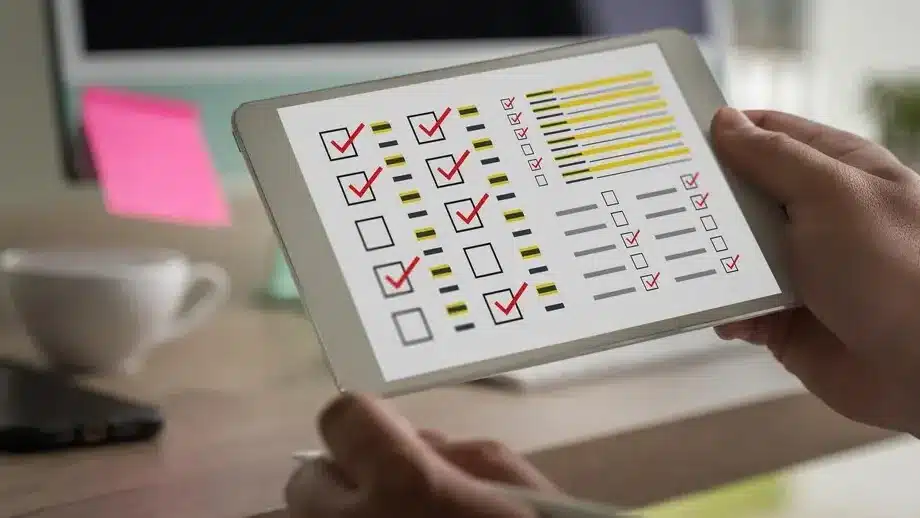Table of Contents
Introduction
Time management is one of the most important skills you can learn to improve your productivity, performance, and well-being. By managing your time effectively, you can get more done in less time, reduce stress, and achieve your goals faster and more easily.
But how do you master time management? Is there a secret formula or a magic trick that can help you manage your time better?
The answer is no. There is no one-size-fits-all solution for time management. However, there are some proven strategies and techniques that can help you optimize your time and make the most of it.
In this article, we will show you how to master time management in 7 easy steps. These steps are based on scientific research, best practices, and real-life examples of successful people who have mastered time management.
Also read: 7 Signs You Need to Start Your Self-Discovery Journey Now » Upgrade Your Life (lifeupgrad.com)
By following these steps, you will be able to:
- Define your goals and align them with your values and vision
- Plan your day ahead and schedule your tasks according to your priorities
- Delegate or outsource what you can and focus on your core competencies
- Eliminate distractions and interruptions and stay focused on your most important tasks
- Track and review your progress and adjust your plans as needed
- Reward yourself and celebrate your wins and achievements
- Enjoy a better balance between your work and personal life
Ready to master time management in 7 easy steps? Let’s get started!
Step 1: Set SMART goals to master time management

The first step to master time management is to set SMART goals. SMART stands for Specific, Measurable, Achievable, Relevant, and Time-bound. These are the criteria that make your goals clear, realistic, and actionable.
Specific: Your goals should be clear and well-defined. Avoid vague or general statements like “I want to be more productive” or “I want to make more money”. Instead, use specific and concrete terms like “I want to finish this project by Friday” or “I want to increase my income by 10% this month”.
Measurable:
Your goals should be quantifiable and trackable. You should be able to measure your progress and results using numbers, percentages, or other indicators. For example, instead of saying “I want to improve my writing skills”, say “I want to write 500 words every day for the next 30 days”.
Achievable:
Your goals should be realistic and attainable. They should challenge you but not overwhelm you. You should have the resources, skills, and abilities to achieve your goals. For example, instead of saying “I want to run a marathon in one month”, say “I want to run 5 kilometers in 30 minutes by the end of the month”.
Relevant:
Your goals should be aligned with your values, vision, and purpose. They should matter to you and contribute to your overall happiness and success. For example, instead of saying “I want to learn a new language”, say “I want to learn Spanish because I want to travel to Spain next year”.
Time-bound:
Your goals should have a deadline or a timeframe. This will help you stay focused, motivated, and accountable. For example, instead of saying “I want to lose weight”, say “I want to lose 10 pounds by the end of the year”.
Setting SMART goals will help you clarify your expectations, define your action steps, and track your progress. You will also be able to evaluate your results and celebrate your achievements.
Step 2: Plan Your Day Ahead

The second step to master time management is to plan your day ahead. Planning your day ahead will help you organize your tasks, prioritize your activities, and allocate your time wisely.
To plan your day ahead, you can use a calendar, a planner, a to-do list, or an app. The tool you use is not as important as the process you follow.
Here are some tips to help you plan your day ahead effectively:
- Do it the night before or the first thing in the morning. This will help you start your day with a clear and focused mind.
- Review your goals and tasks for the day. Make sure they are SMART and aligned with your priorities.
- Estimate how much time each task will take and assign a time slot for each one. Be realistic and leave some buffer time for unexpected events or emergencies.
- Arrange your tasks according to your energy levels and preferences. For example, you can do your most important or difficult tasks in the morning when you are fresh and alert, and save your less important or easier tasks for the afternoon or evening when you are tired or bored.
- Batch similar or related tasks together. For example, you can group all your emails, calls, or meetings in one block of time, and all your writing, reading, or research in another block of time. This will help you avoid switching between different types of tasks and save time and mental energy.
- Schedule some breaks and downtime. Don’t forget to take care of your physical and mental health. You need to rest, relax, and recharge your batteries. You can also use your breaks to do something fun, enjoyable, or rewarding.
Planning your day ahead will help you optimize your time and make the most of your day. You will also be able to avoid procrastination, stress, and overwhelm.
Step 3: Prioritize Your Tasks

The third step to master time management is to prioritize your tasks. Prioritizing your tasks will help you focus on what matters most, what adds the most value, and what moves you closer to your goals.
To prioritize your tasks, you can use a simple and effective method called the Eisenhower Matrix. The Eisenhower Matrix is a tool that helps you categorize your tasks into four quadrants based on their urgency and importance.
Here is how it works:
Quadrant 1:
Urgent and Important. These are the tasks that are both urgent and important. They are the ones that require your immediate attention and action. They are usually related to your goals, deadlines, or crises. For example, finishing a project that is due today, dealing with a customer complaint, or responding to an emergency. These tasks should be your top priority and you should do them first.
Quadrant 2:
Not Urgent but Important. These are the tasks that are not urgent but important. They are the ones that contribute to your long-term success and well-being. They are usually related to your planning, learning, or growth. For example, setting your goals, making your plans, reading a book, or taking a course. These tasks should be your second priority and you should schedule them for later.
Quadrant 3:
Urgent but Not Important. These are the tasks that are urgent but not important. They are the ones that demand your time and attention but don’t add much value or impact. They are usually related to your interruptions, distractions, or obligations. For example, answering an email, taking a call, or attending a meeting. These tasks should be your third priority and you should delegate or outsource them if possible.
Quadrant 4:
Not Urgent and Not Important. These are the tasks that are not urgent and not important. They are the ones that waste your time and energy and don’t contribute to your goals or happiness. They are usually related to your habits, entertainment, or indulgence. For example, browsing social media, watching TV, or playing games. These tasks should be your last priority and you should eliminate or minimize them as much as possible.
Using the Eisenhower Matrix will help you prioritize your tasks and make better decisions. You will also be able to manage your time more efficiently and effectively.
Step 4: Delegate or Outsource What You Can
The fourth step to master time management is to delegate or outsource what you can. Delegating or outsourcing your tasks will help you free up your time, reduce your workload, and focus on your core competencies.
Delegating means assigning your tasks to someone else who can do them for you, such as a colleague, a team member, or a subordinate. Outsourcing means hiring someone else who can do your tasks for you, such as a freelancer, a contractor, or a service provider.
To delegate or outsource your tasks, you need to follow these steps:
- Identify the tasks that you can delegate or outsource. These are usually the tasks that are not urgent or important, that are repetitive or routine, that are outside your expertise or interest, or that can be done better or faster by someone else.
- Choose the right person or platform to delegate or outsource your tasks to. You need to consider their skills, experience, availability, reliability, and cost. You also need to check their reviews, ratings, or references.
- Communicate your expectations and instructions clearly and effectively. You need to specify the scope, deadline, quality, and feedback of your tasks. You also need to provide the necessary resources, tools, or information.
- Monitor and evaluate the results and outcomes of your tasks. You need to track the progress and performance of your tasks. You also need to provide feedback, appreciation, or correction.
Delegating or outsourcing your tasks will help you leverage your time and resources. You will also be able to improve
Step 5: Eliminate Distractions and Interruptions

The fifth step to master time management is to eliminate distractions and interruptions. Distractions and interruptions are the enemies of productivity and focus. They can disrupt your flow, waste your time, and lower your quality of work.
Distractions are anything that takes your attention away from your tasks, such as your phone, email, social media, or entertainment. Interruptions are anything that stops you from completing your tasks, such as a call, a meeting, a visitor, or an emergency.
To eliminate distractions and interruptions, you need to follow these tips:
- Turn off or silence your phone, email, and notifications. You can also use apps or tools that block or limit your access to distracting websites or apps. For example, you can use Freedom, Cold Turkey, or FocusMe.
- Set boundaries and expectations with others. You can communicate your availability and preferences to your colleagues, clients, family, and friends. You can also use signs, signals, or statuses to indicate when you are busy or available. For example, you can use a Do Not Disturb mode, a BusyLight, or a Pomodoro Timer.
- Schedule your interruptions and distractions. You can allocate specific times or slots for checking your phone, email, or social media, or for taking calls, meetings, or breaks. You can also use the Pomodoro Technique to work in focused intervals of 25 minutes followed by short breaks of 5 minutes.
- Learn to say no or negotiate. You can decline or postpone requests or invitations that are not urgent or important, or that conflict with your priorities or goals. You can also negotiate the terms, conditions, or deadlines of your tasks or projects. For example, you can say “I’m sorry, I can’t do this right now, but I can do it later” or “I can do this, but I need more time or resources”.
Eliminating distractions and interruptions will help you stay focused and productive. You will also be able to improve your quality of work and your satisfaction.
Step 6: Track and Review Your Progress

The sixth step to master time management is to track and review your progress. Tracking and reviewing your progress will help you measure your results, evaluate your performance, and identify your strengths and weaknesses.
To track and review your progress, you need to follow these steps:
- Define your key performance indicators (KPIs). These are the metrics or indicators that show how well you are achieving your goals and tasks. For example, you can use the number of words written, the number of projects completed, the amount of money earned, or the level of satisfaction achieved.
- Record your data and results. You need to collect and document your data and results using tools or methods that suit your preferences and needs. For example, you can use a spreadsheet, a journal, a dashboard, or an app. You can also use RescueTime, Toggl, or Clockify to track your time and activities automatically.
- Analyze your data and results. You need to interpret and understand your data and results using techniques or methods that help you draw insights and conclusions. For example, you can use charts, graphs, tables, or reports. You can also use Google Analytics, Microsoft Power BI, or Tableau to visualize and analyze your data and results easily.
- Adjust your plans and actions. You need to modify and improve your plans and actions based on your data and results. You can also set new goals, tasks, or strategies if needed. For example, you can change your priorities, deadlines, or resources. You can also use Asana, Trello, or Monday to manage your projects and tasks effectively.
Tracking and reviewing your progress will help you optimize your time and improve your outcomes. You will also be able to learn from your mistakes and celebrate your successes.
Step 7: Reward Yourself and Celebrate Your Wins

The seventh and final step to master time management is to reward yourself and celebrate your wins. Rewarding yourself and celebrating your wins will help you motivate yourself, boost your morale, and reinforce your positive habits.
To reward yourself and celebrate your wins, you need to follow these tips:
- Choose rewards and celebrations that are meaningful and enjoyable to you. They should be something that you value and appreciate, and that make you happy and satisfied. For example, you can reward yourself with a treat, a gift, or a compliment. You can also celebrate your wins with a party, a trip, or a thank you note.
- Align your rewards and celebrations with your goals and tasks. They should be proportional and appropriate to your goals and tasks. They should also be consistent and timely. For example, you can reward yourself with a coffee break after finishing a small task, or with a vacation after completing a big project. You can also celebrate your wins with a toast at the end of the day, or with a certificate at the end of the month.
- Share your rewards and celebrations with others. You can involve your colleagues, friends, family, or mentors in your rewards and celebrations. They can help you acknowledge your achievements, provide feedback, and offer support. For example, you can reward yourself with a lunch date with a friend, or with a mentorship session with an expert. You can also celebrate your wins with a testimonial from a client, or with a recognition from a boss.
Rewarding yourself and celebrating your wins will help you enjoy your time and appreciate your efforts. You will also be able to maintain your momentum and enthusiasm.
**** Resources to download and listen to free books about: Time Management – search | Open Library
Conclusion
Time management is a skill that can help you achieve your goals faster and more efficiently. By mastering time management, you can get more done in less time, reduce stress, and enjoy a better balance between your work and personal life.
In this article, we have shown you how to master time management in 7 easy steps. These steps are:
- Set SMART goals
- Plan your day ahead
- Prioritize your tasks
- Delegate or outsource what you can
- Eliminate distractions and interruptions
- Track and review your progress
- Reward yourself and celebrate your wins
By following these steps, you will be able to optimize your time and make the most of it. You will also be able to improve your productivity, performance, and well-being.
We hope you found this article helpful and informative. If you have any questions, comments, or feedback, please feel free to share them with us. We would love to hear from you.
Thank you for reading and happy time management!
Frequently Asked Questions
Here are some frequently asked questions and their answers about time management:
What are the benefits of time management?
- Some of the benefits of time management are:
- Increased productivity and efficiency
- Reduced stress and anxiety
- Enhanced quality of work and results
- Improved decision making and problem solving
- Greater satisfaction and happiness
- Better balance and harmony
What are the challenges of time management?
- Some of the challenges of time management are:
- Lack of clarity and direction
- Unrealistic or conflicting expectations and demands
- Procrastination and perfectionism
- Distractions and interruptions
- Poor habits and routines
- Low motivation and morale
What are the best tools for time management?
- There is no definitive answer to this question, as different tools may suit different people, preferences, and needs. However, some of the most popular and effective tools for time management are:
- Calendars, planners, and to-do lists
- Time trackers and timers
- Project and task managers
- Data and analytics tools
- Apps and software
How can I improve my time management skills?
- You can improve your time management skills by following these tips:
- Set SMART goals and align them with your values and vision
- Plan your day ahead and schedule your tasks according to your priorities
- Delegate or outsource what you can and focus on your core competencies
- Eliminate distractions and interruptions and stay focused on your most important tasks
- Track and review your progress and adjust your plans as needed
- Reward yourself and celebrate your wins and achievements
- Learn from your mistakes and feedback and seek continuous improvement
- Seek help and guidance from experts and mentors




Can you be more specific about the content of your article? After reading it, I still have some doubts. Hope you can help me.
Thank you for your sharing. I am worried that I lack creative ideas. It is your article that makes me full of hope. Thank you. But, I have a question, can you help me?